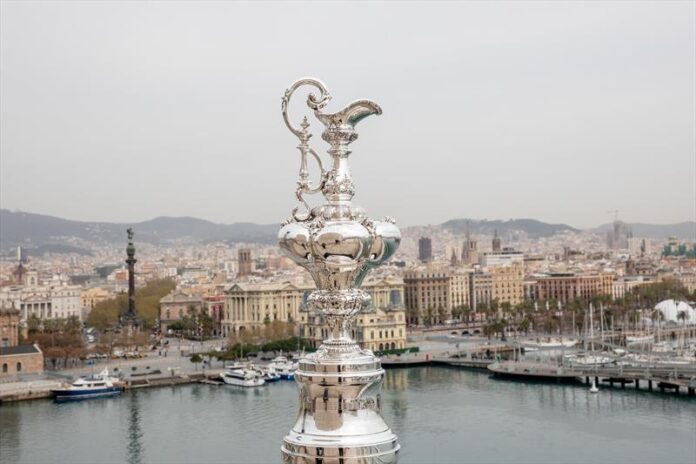Several changes have been made to the Protocol and other documents governing the conduct of the 2024 America’s Cup.
Some of the changes relate to the announcement of Barcelona as the Host Venue, others close loopholes that could have been exploited, and there is a substantial section on Hydrogen-Powered Support vessels.
Changes to the calendar for staging the America’s Cup and other supporting regattas were expected. The two-month racing period initially set down for May – June 2024 is now expanded to three months and is now pushed back to August – October 2024.
The reasons for the change are to avoid a clash with the Paris 2024 Olympics – held from late July to mid-August and to get into more temperate weather and a reliable breeze.
Within those three months, two America’s Cup Preliminary Regattas will be sailed between the Challenger/Defender teams sailing in AC40s – the one design, approximately half size AC75 America’s Cup Class, sailed by four crew.

A third preliminary regatta will be contested between the Challenger/Defender teams using the AC75s to be sailed in the 2024 America’s Cup.
The Preliminary regattas are each anticipated to be spread over ten days, including two weekends. The publication of dates is required to take place a year before the first race of the America’s Cup.
The Women’s America’s Cup and Youth America’s Cup will also be sailed in this same three-month AC2024 Regatta period, using the team AC40s. Details of the race programme are not yet to hand.
The time frame in which practice sailing is permitted has also been changed following the announcement of Barcelona as the Host Venue for America’s Cup 2024.
America’s Cup teams are still not allowed to begin sailing until the middle of September 2022.
The exception is Alinghi Red Bull Racing, along with any new and as yet unannounced Challengers. The so-called New Teams were permitted to start sailing a first-generation AC75 for a period of 17 days between June 17 and September 17, 2022.
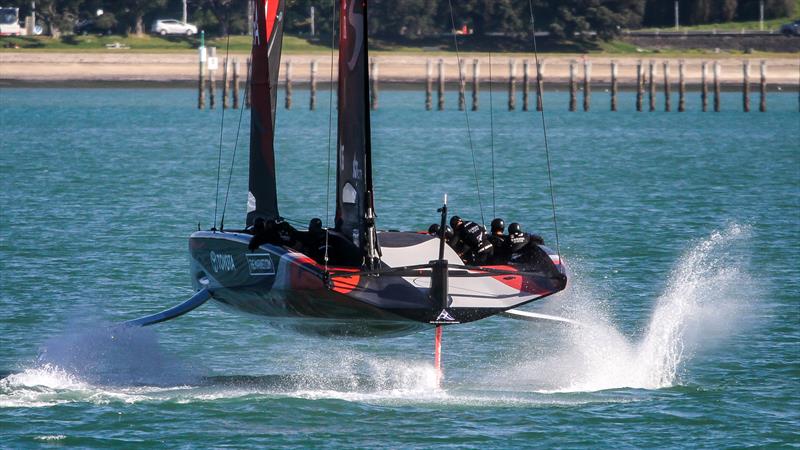
Currently, there is only one New Team – twice winner of the America’s Cup Alinghi Red Bull Racing, who may be sailing their AC75, the former Te Aihe, acquired from Emirates Team New Zealand, over the next five weeks.
They are understood to have a base in Barcelona and will be based at the AC2024 venue.
Voluntary stand down dropped
The requirement has been dropped for the teams to nominate an eight-week “no sailing period” between March 1, 2023, and May 31, 2023. Presumably, the other changes in dates made the requirement impractical.
The reason for the voluntary “no sail” period was never clarified. Its purpose is presumed to allow teams to transition to the venue ahead of the old “Venue Only” sailing period from June 1, 2023, to September 30, 2023.
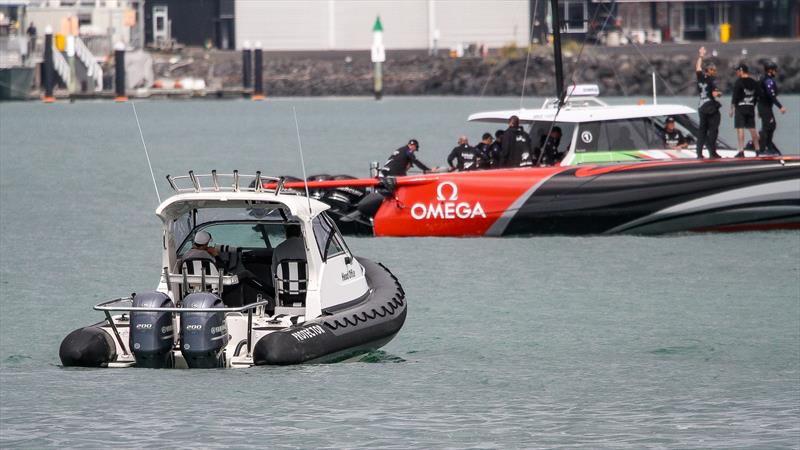
In a further change, the Venue Only sailing period remains at four months duration but has been shifted by a month to start on July 1, 2023, and run to October 31, 2023. If the teams want to sail during those four months, they can only do so in Barcelona. They can still race just a single AC75 (except in the case of Alinghi Red Bull Racing – who, as a New Team, is allowed two AC75s – one a first generation boat and the other Race Boat, as are any other New Competitors.
In Barcelona, the teams still are not allowed to conduct reconnaissance outside that already undertaken by the Joint Recon Program against other teams.
But they can observe from a distance, and in previous Cups under somewhat similar restrictions, the teams have inadvertently got close enough to their competitors to gauge relative performance. They will also be able to see first-hand, during launching, the foil wings and rudders being used by other teams on their AC40s or AC75s.
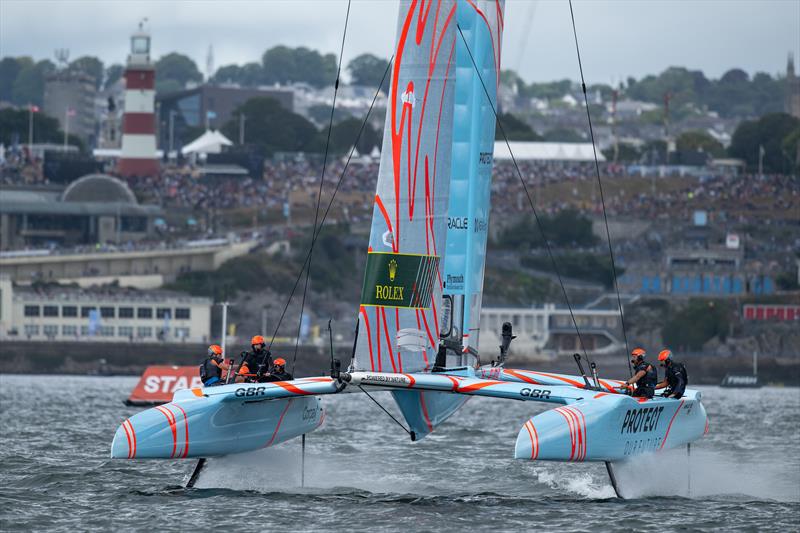
SailGP/F50’s now legal
There has been a change in the rules regarding the use of Surrogate Boats being used as AC75 development platforms. As in the last America’s Cup, teams are prohibited from sailing yachts longer than 12metres overall capable of “producing design or performance information”.
Teams are also prohibited from doing the same using any other sailing yacht (or platform towed or now “motorised” to simulate a sailing yacht) that was longer than 6 metres.
The rules have been eased, prohibiting the use of class racing yachts which sit outside the 12-metre yacht or 6-metre platform restrictions.
The rules that previously only mentioned TP52 now also specifically allow F50s/SailGP and yachts only used for racing, which held valid IRC or ORC certificates as of the winning of the 2021 America’s Cup, which marks the start of the new Cup cycle.
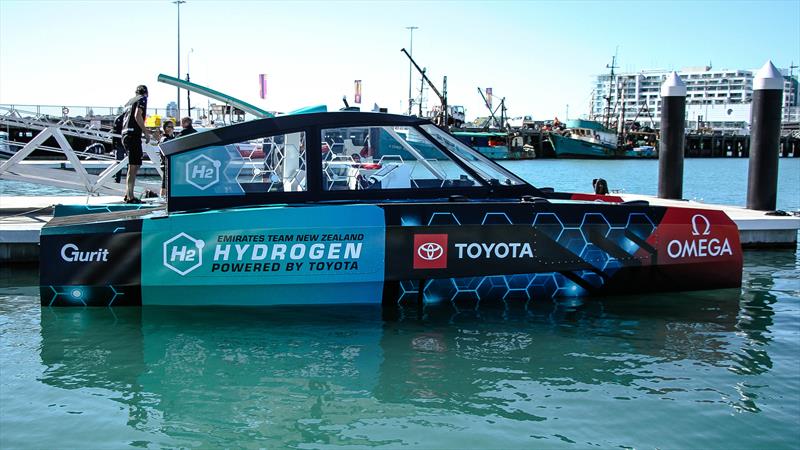
Hydrogen Chase Boat requirement changed
Other changes to the Protocol pivot around changes to the rules covering Foiling Chase Boats.
The first version of the Protocol contained a provision that “COR/D [Challenger of Record/Defender] is considering a requirement that each Competitor will be required to employ a minimum of two hydrogen-powered support vessels (“HSV) at the Match Venue to support its own race operations”.
The requirement for two HSVs per team has now been reduced to at least one.
The Protocol now mandates that reach competitor shall have one HSV in the race area and a maximum of four “non-hydrogen powered support vessels operating in the Racing Area”.
The reduction to one HSV per team is said to be a response to global issues affecting supply chains and fuel cell availability. It is set against the backdrop of a big increase in demand for alternative energy systems and finite production capabilities for producing the systems.
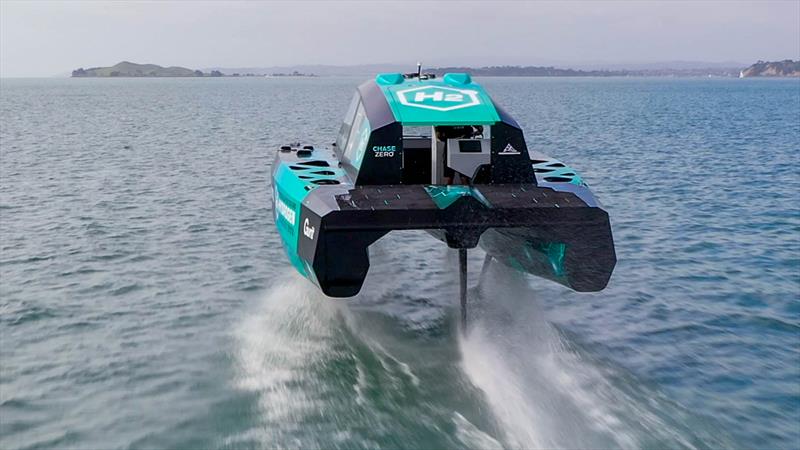
It is anticipated that even with just one HSV per team, the limit on fossil-fueled chase boats will be sufficient to impact the water and for the event to be a positive example of hydrogen technology in the marine sector.
Competitors can purchase HSVs from America’s Cup Event Ltd, the regatta organiser – or its nominated manufacturer, or build their own, provided they meet the performance requirements in the Protocol.
A string of rules has been introduced covering what are now classified as Generation 1 or 2 Foiling Chase Boats. These changes relate to foil area, and the new rules cover chase boats if they have a foil size greater than 0.3sq metres. These apply to foiling support boats regardless of whether they are HSVs or conventionally powered. Presumably, it prevents teams from using the chase boats as a test boat for foil design, which is consistent with other Protocol changes to the use of Surrogate Yachts.
The Defender, the Royal New Zealand Yacht Squadron, has yet to declare whether it had received any new Challenges almost a week after the entry period close.



